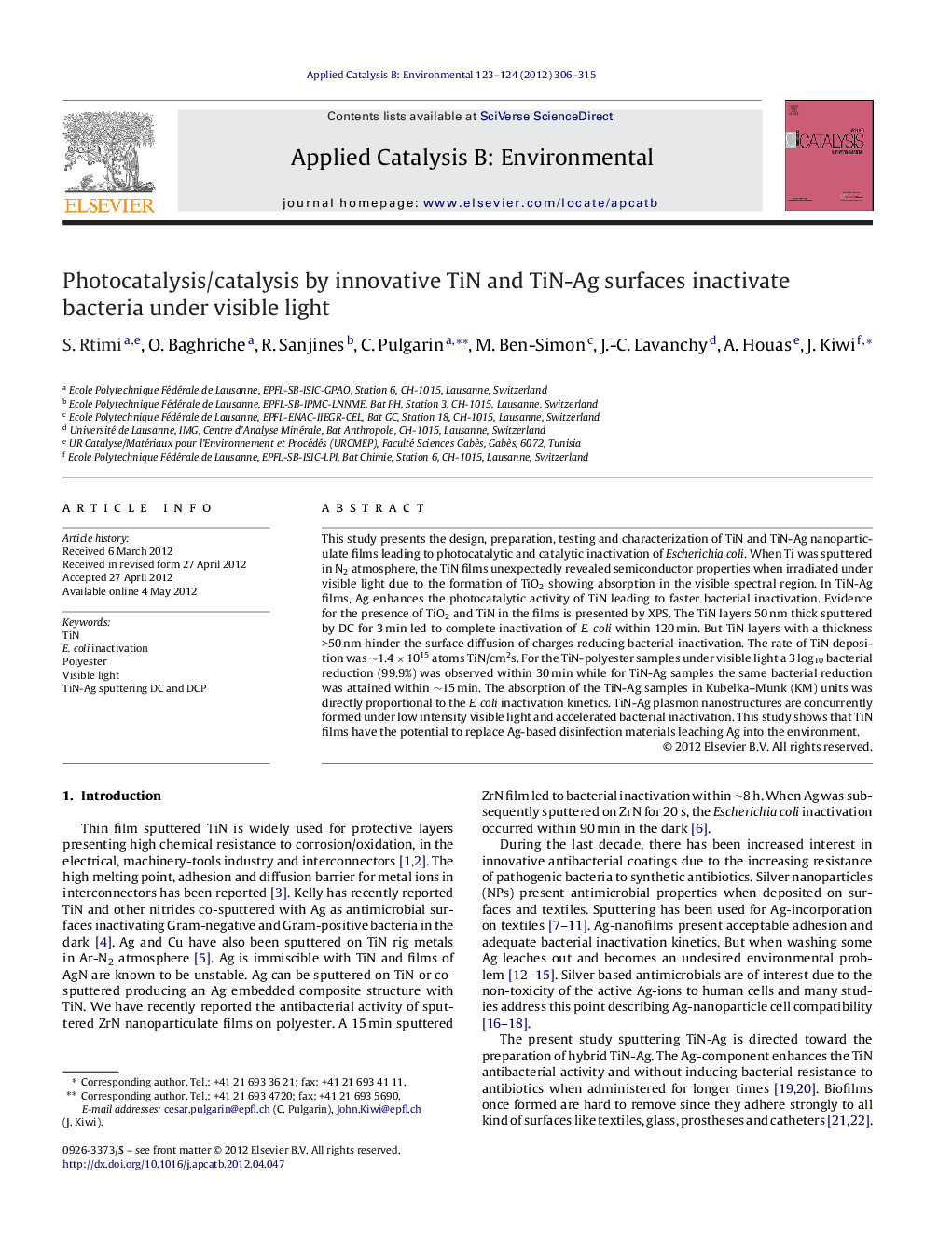| کد مقاله | کد نشریه | سال انتشار | مقاله انگلیسی | نسخه تمام متن |
|---|---|---|---|---|
| 46149 | 46430 | 2012 | 10 صفحه PDF | دانلود رایگان |

This study presents the design, preparation, testing and characterization of TiN and TiN-Ag nanoparticulate films leading to photocatalytic and catalytic inactivation of Escherichia coli. When Ti was sputtered in N2 atmosphere, the TiN films unexpectedly revealed semiconductor properties when irradiated under visible light due to the formation of TiO2 showing absorption in the visible spectral region. In TiN-Ag films, Ag enhances the photocatalytic activity of TiN leading to faster bacterial inactivation. Evidence for the presence of TiO2 and TiN in the films is presented by XPS. The TiN layers 50 nm thick sputtered by DC for 3 min led to complete inactivation of E. coli within 120 min. But TiN layers with a thickness >50 nm hinder the surface diffusion of charges reducing bacterial inactivation. The rate of TiN deposition was ∼1.4 × 1015 atoms TiN/cm2s. For the TiN-polyester samples under visible light a 3 log10 bacterial reduction (99.9%) was observed within 30 min while for TiN-Ag samples the same bacterial reduction was attained within ∼15 min. The absorption of the TiN-Ag samples in Kubelka–Munk (KM) units was directly proportional to the E. coli inactivation kinetics. TiN-Ag plasmon nanostructures are concurrently formed under low intensity visible light and accelerated bacterial inactivation. This study shows that TiN films have the potential to replace Ag-based disinfection materials leaching Ag into the environment.
Figure optionsDownload as PowerPoint slideHighlights▸ When Ti was sputtered in N2 atmosphere, the TiN films revealed semiconductor properties. ▸ TiN layers 50 nm thick sputtered by DC for 3 min led to complete inactivation of E. coli within 120 min. ▸ The optical absorption of TiN-Ag films in Kubelka–Munk units was directly proportional to the E. coli inactivation kinetics. ▸ A TiN film has the potential to replace Ag-based disinfection films leaching Ag into the environment.
Journal: Applied Catalysis B: Environmental - Volumes 123–124, 23 July 2012, Pages 306–315